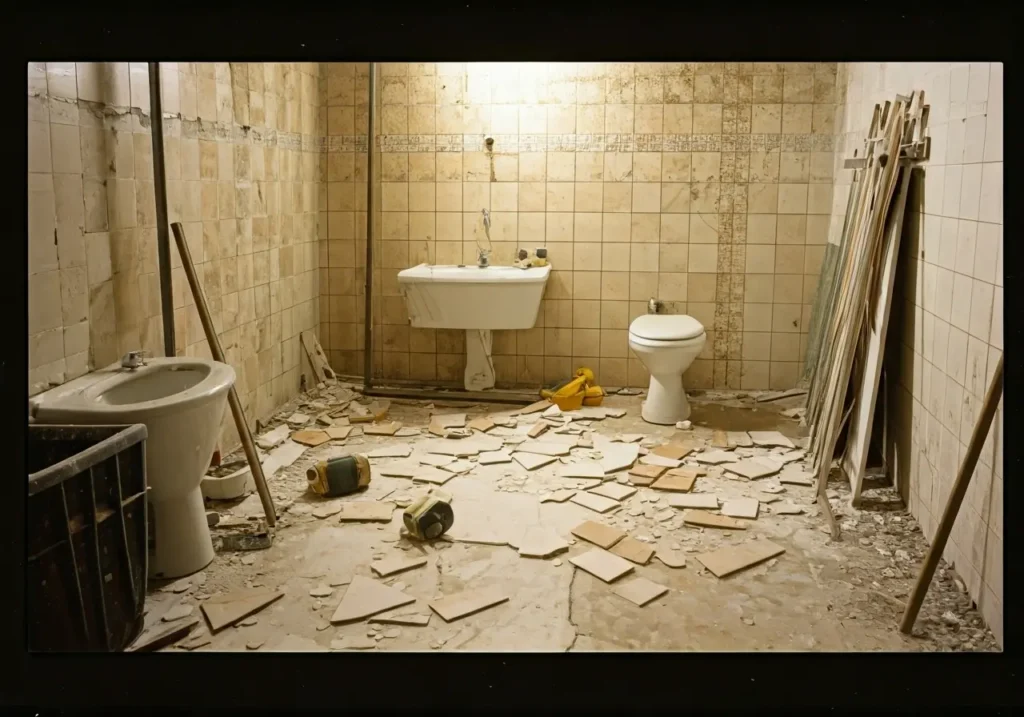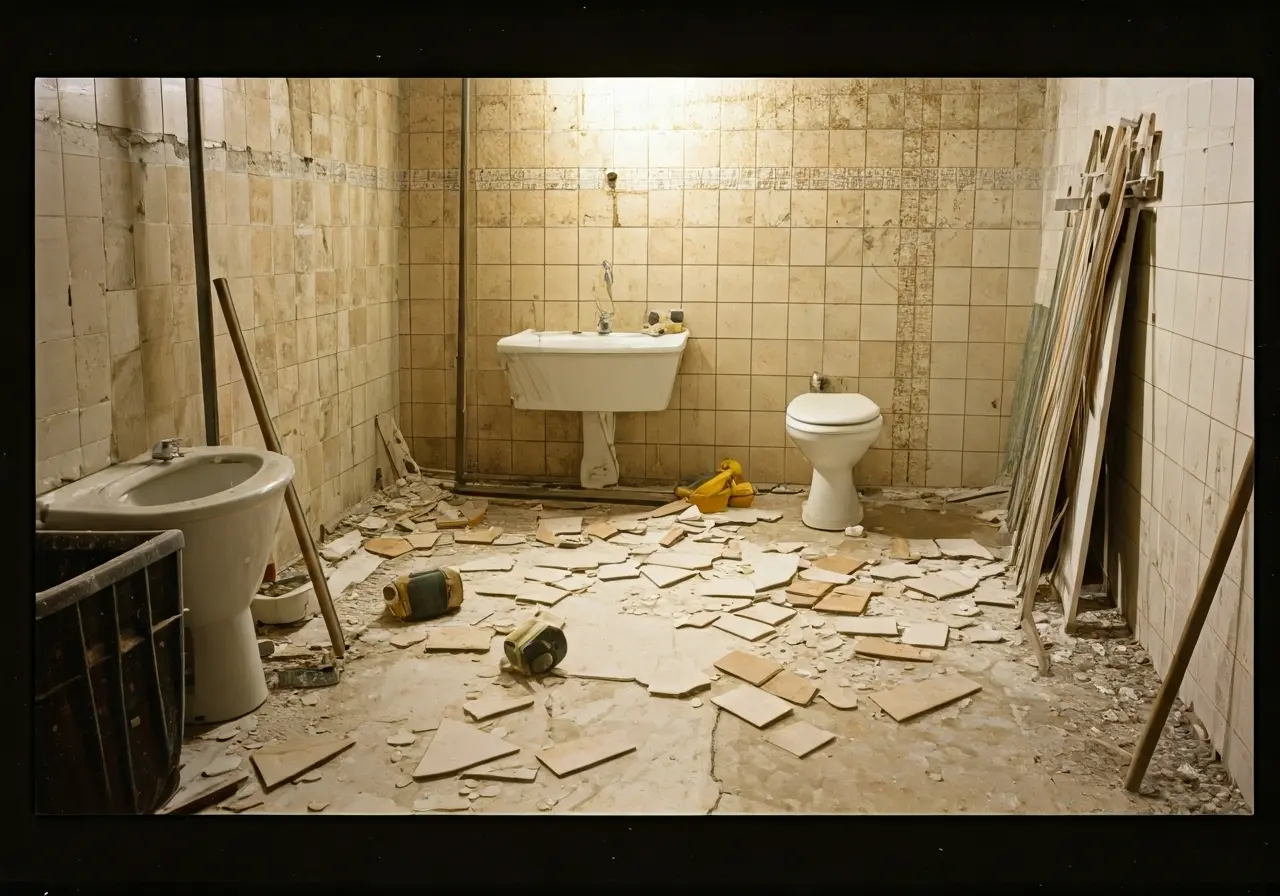Embarking on a bathroom renovation in Mississauga can be an exciting endeavor, but without proper planning, it can also be fraught with pitfalls. From budget blunders to design dilemmas, making informed choices is key to creating the bathroom of your dreams. In this guide, we’ll walk you through the most common mistakes homeowners make, so you can avoid them and ensure a smooth renovation process.
1. Neglecting a Proper Plan
Jumping into a renovation without a solid plan can lead to costly mistakes. Ensure you have a clear vision, budget, and timeline before starting your project.
One of the first steps in avoiding renovation blunders is establishing a comprehensive plan. This involves not only deciding on the layout and aesthetics but also understanding the practicalities of the space. It’s essential to set a realistic budget that factors in both expected and unexpected costs. Moreover, adhering to a timeline can prevent your project from dragging on indefinitely, causing both frustration and additional expenses. Always remember, a little foresight and planning can go a long way in ensuring the success of your bathroom renovation in Mississauga.
2. Overlooking Plumbing Details
Missteps with plumbing can lead to significant issues later. Consult with a professional to ensure pipes and drains are properly configured.
When planning a bathroom overhaul, it’s easy to focus on the aesthetics and forget about the hidden, yet equally important, elements like plumbing. Ensuring that all pipes and drains are correctly installed and easily accessible can save you from future headaches and expenses. Enlisting the expertise of a professional plumber early on can help you avoid poor water pressure issues or leaks, especially in older homes where plumbing may already be in a fragile state.
3. Underestimating Budget Requirements
It’s easy to go over budget if you don’t account for all the potential expenses. Allocate funds for unexpected costs to avoid financial strain.
Budgeting is crucial for a successful renovation. While you may plan for certain expenses, unforeseen issues often arise, such as structural repairs or supply delays. It’s wise to reserve a portion of your budget for contingencies. An underestimated budget can lead to incomplete work or the necessity to compromise on materials, ultimately affecting the quality of your finished bathroom. Sight unseen, issues like mold, outdated wiring, or foundational concerns could demand more immediate attention and resources than initially anticipated.
4. Opting for Trend Over Timeless
Trendy designs may date quickly. Consider classic styles that can withstand the test of time for a more lasting appeal.
In the fast-paced world of home design, it’s tempting to chase trends, incorporating the latest colors, materials, or fixtures. However, what seems stylish now might make your bathroom look dated in just a few years. Opting for timeless designs, such as neutral palettes or classic tile patterns, can offer a sophisticated backdrop that remains appealing over time. This approach not only ensures a long-lasting aesthetic but can also increase the resale value of your home.
5. Ignoring Ventilation Needs
Proper ventilation is crucial to prevent mold and moisture buildup. Ensure your bathroom is equipped with adequate exhaust fans.
Moisture is the number one enemy of any bathroom design. To combat this, an effective ventilation system is non-negotiable. Neglecting this can lead to persistent mold issues and deteriorating finishes, which may require costly repairs down the line. Ensure your renovation plans include installing efficient exhaust fans that are vented to the outside, not to an attic or dead space, to effectively manage humidity levels.
6. Choosing the Wrong Materials
Selecting materials that aren’t suitable for a bathroom environment can be disastrous. Opt for water-resistant and durable finishes.
Bathrooms pose unique challenges that require careful material selection to ensure longevity and functionality. Avoid materials prone to water damage, like untreated wood or porous stones, and instead choose tiles and surfaces known for their moisture resistance. Durable, easy-to-clean materials not only enhance the longevity of your renovation but also simplify ongoing maintenance, saving you time and potential frustration.
7. Poor Lighting Choices
Lighting can make or break a bathroom’s ambiance. Combine various lighting sources for a warm and inviting atmosphere.
The right lighting transforms a bathroom from a purely functional space into a relaxing retreat. Aim to mix ambient, task, and accent lighting to achieve a harmoniously lit environment. Use dimmable lights to adjust the brightness level for different activities and times of day. Carefully consider mirror lighting to avoid harsh shadows that can impact grooming tasks.
8. Forgetting About Accessibility
Consider the needs of all users, including those with mobility challenges, to ensure your bathroom is accessible and user-friendly.
Thoughtful design that encompasses accessibility is imperative for creating a bathroom that is not just beautiful, but also usable by everyone, regardless of age or mobility. Simplifying navigation through features like wider doorways, grab bars, curbless showers, and lower-mount vanities can greatly enhance ease of use for anyone in your household. Such considerations are not just inclusive; they also future-proof your home for possible shift in family needs.
9. Neglecting Storage Solutions
Ample storage is essential for maintaining a tidy bathroom. Incorporate practical solutions like shelves and cabinets to organize essentials.
Without adequate storage solutions, even the most beautifully designed bathrooms can become cluttered and chaotic. Ensure your renovation includes strategically positioned storage options, such as recessed shelves, tall cabinets, or built-in niches. Utilizing vertical spaces can maximize storage while still maintaining an open and clutter-free appearance.
10. Avoiding Professional Help
While DIY projects have their allure, consulting with professionals can save you time and prevent costly errors during your renovation.
The allure of DIY projects can be appealing when planning a renovation. However, enlisting professionals to oversee critical phases can be a wise investment. From plumbing to electrical work, experts possess the experience and certifications that can avert serious issues down the line. Professional guidance can expedite the process, ensuring that all aspects of the renovation meet safety standards and aesthetically align with your vision.
11. Disregarding Energy Efficiency
Investing in energy-efficient fixtures can lower long-term costs and reduce environmental impact. Look for water-saving toilets and LED lighting.
Renovating with energy efficiency in mind is not just environmentally responsible but can also yield significant financial savings. Incorporating fixtures like low-flow toilets, energy-efficient faucets, and LED lighting can noticeably reduce water and electricity usage. These updates not only lessen your carbon footprint but also add value to your home, enhancing appeal to potential eco-conscious buyers.
12. Miscalculating Space Requirements
Properly measure and plan for space to ensure your fixtures fit comfortably without overcrowding the room.
Space planning is a critical element that influences both functionality and aesthetics. Measure meticulously to ensure your layout best accommodates the size and shape of your bathroom. Elements like the toilet, sink, and shower should have adequate clearance for comfortable use and movement. A well-thought-out layout contributes to the overall usability and comfort of the space.
13. Skipping Future-Proofing Considerations
Think about future needs and adaptability of your bathroom as your family grows or changes.
Future-proofing your bathroom during renovation greatly extends its lifespan and utility. Consider potential changes in your household composition or lifestyle, incorporating adaptable designs that cater to a wide range of needs. Features such as adjustable showerheads or vanities, flexible storage solutions, and universal design principles ensure your bathroom remains functional, no matter what the future holds for your home life.
14. Overlooking Water Efficiency
Water-efficient fixtures not only lower your utility bills but are also better for the environment. Consider low-flow toilets and faucets.
Integrating water-saving technologies within your renovation plan offers both ecological and economical payoffs. Low-flow toilets, aerated faucets, and efficient showerheads conserve significant amounts of water without compromising on performance. Not only do these reduce household water consumption, subsequently lowering water bills, but they also play a crucial role in promoting sustainable living practices.
15. Disregarding Aesthetic Cohesion
Ensure your bathroom design complements the rest of your home for a harmonious transition between spaces.
The transition from your main living areas to the bathroom should maintain a visual flow, cohesively tying together your home’s overall design theme. Select materials, colors, and fixtures that complement the architectural style and palette of adjoining rooms. Consider elements like flooring’s continuity or thematic accent touches to create an inviting and stylistically consistent environment throughout your home.



